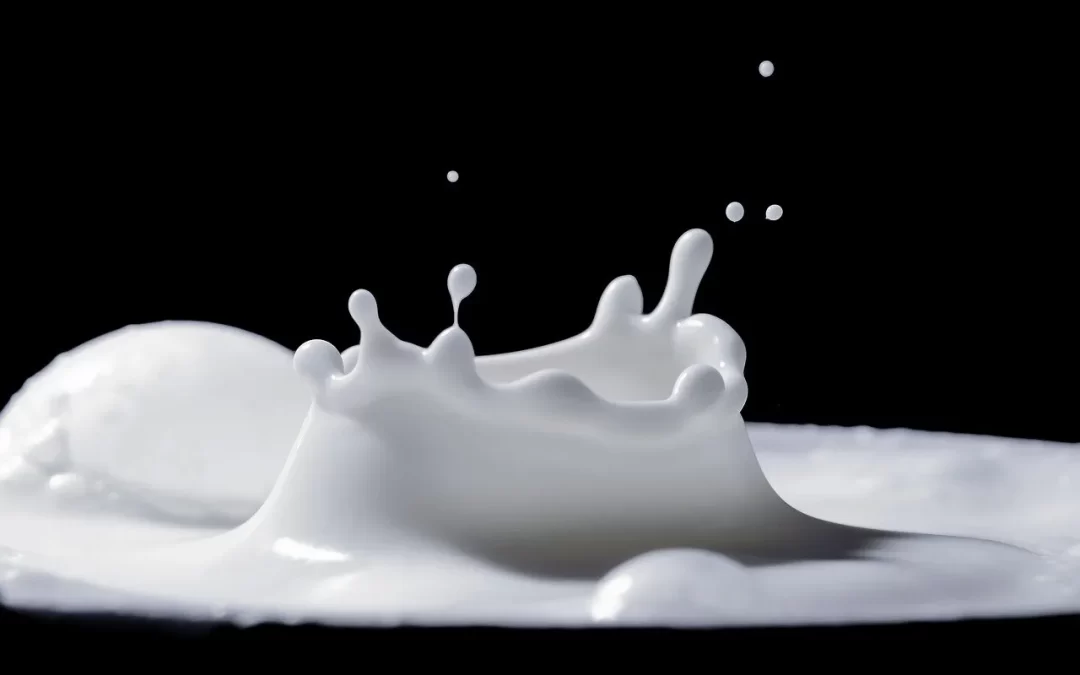What is surface tension? It’s the tension in a liquid’s surface film, which takes up the least amount of space possible because of the fluid’s elasticity. The cohesion of liquid molecules keeps the surface of liquid placid and still. The particles in the liquid will adhere to each other more tightly than other things, hence creating the tension.
Of course, trying to explain surface tension to kids in a language they can understand is a much greater challenge. It’s easier to have them do an experiment that demonstrates the principles of surface tension and shows them how it can change. We’ve picked one that involves an everyday beverage your kids will see in an entirely new and exciting way.
The result of this experiment? Tie-dye milk. It’s really pretty cool.
Materials for the Color-Changing Milk Experiment
You will need the following materials to make color-changing milk:
- Whole or two-percent milk
- Q-tips
- Dish soap
- Food coloring, four shades
- Small dish
How to Perform the Color-Changing Milk Experiment
Pour some milk into the dish. Add four drops of food coloring — one of each color — to the middle of the milk, spacing them out enough so that they do not touch each other.
Ask your child what they think will happen when you add the cotton swab to the milk. Have them state their prediction out loud. Then submerge the end of the Q-tip in the center of the milk, near where you put the color dots. Avoid stirring. You just want to touch the milk. Note what happens to the colors and the milk.
Remove the cotton swab. Dip the tip of the other side gently into the dish soap. Once again, ask your child to predict what will happen when you touch the center of the milk the second time. Do they think the colors will react the same? Or will they do something different?
Submerge the soap-covered Q-tip into the center of the milk, and keep it there for up to 20 seconds. Note how the colors seem to explode. Talk to your child about what looks different this time versus the first time you stuck the cotton swab in the milk.
Change the Experiment to See Different Things
Pull the tip of the swab out of the milk and dab it into the dish soap once more. Then put it back in the milk. This time move it around to touch other colors. Watch the colors after you remove the Q-tip. Are they still moving?
Ask your kids what they think would happen if you did the experiment with a different liquid. Would they see the same effect with, say, water as they did with milk? Why or why not? Get a dish of water and see if their hypothesis holds up. You can carry out the same experiment several times using different liquids.
Talk to your kids about the concept of surface tension and how you saw it on display with the milk. Milk and water both have surface tension, but milk has fat that allows this experiment to play out. The food coloring is not as dense as the milk, and so it does not mix until it comes into contact with the soap, which breaks the fat in the milk down.
Enjoy More Surface Tension Experiments for Kids
Do your children love learning about science through experiments like this one? Bring them to our science summer camps and after-school science clubs , where they can have more fun exploring concepts like surface tension. Contact us to learn more about our activities in PA, NJ, MD and DE.

